![]()
![]()
![]()
Use LEFT and RIGHT arrow keys to navigate between flashcards;
Use UP and DOWN arrow keys to flip the card;
H to show hint;
A reads text to speech;
34 Cards in this Set
- Front
- Back

|
Palazzo Vecchio
Architect: Unknown |
|

|
Holy trinity
Artist: Masaccio |
|
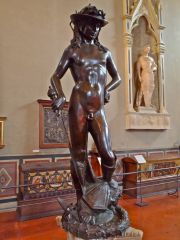
|
David (Bronze)
Artist: Donatello Original Location: Palazzo Medici courtyard |
|

|
Bacchus
Artist: Michelangelo |
|

|
David
Artist: Michelangelo |
|
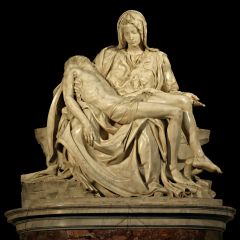
|
Pieta
Artist: Michelangelo |
|
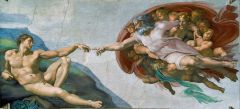
|
Creation of Adam
Artist: Michelangelo |
|
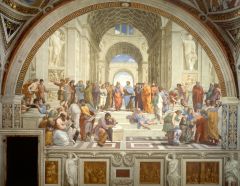
|
School of Athens
Artist: Raphael *This room was originally the library, painting acted as a card catalog |
|
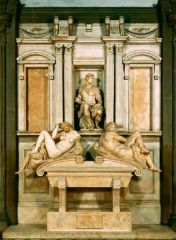
|
Tomb of Galiano De’Medici
Artist: Michelangelo |
|
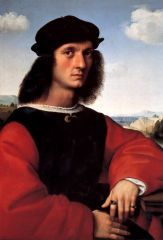
|
Portrait of Angelo Doni
Artist: Raphael |
|
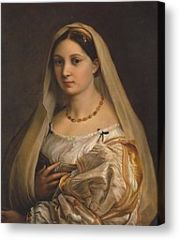
|
Portrait of woman – La Velata
Artist: Rafael |
|
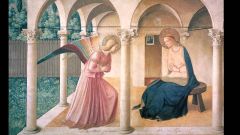
|
Annunciation
Artist: Fra Angelico |
|
|
Why were the Slaves sculptures unfinished?
|
Because he stopped working on the tomb and the size was shrunken down
|
|
|
Why did Michelangelo come to Rome?
|
To work on Pope Julius II tomb
|
|
|
Black Death date
|
1348
|
|
|
Giotto’s Painting style can be characterized as including
|
Emotional, a lot of movement, naturalistic, theatrical
|
|
|
Portrait of the Duke of Urbino now in the Uffizi
|
Portrays the duke as a man of power
|
|
|
City of Florence was founded in
|
59 BC as a Roman Castrum
|
|
|
Cosimo de’ Medici rejected Brunelleschi’s model for Palazzo Medici because
|
It was too lavish
|
|
|
The mission of the Dominican Oder was |
To combat against heresy
|
|
|
The old sacristy San Lorenzo
|
Was designed by Filippo Brunelleschi and was used as a funerary chapel
|
|
|
In an ancient Roman city, the Forum is…
|
The political, social, and religious center
|
|
|
What style of paintings does Rafael do?
|
High Renaissance
|
|
|
Centralized plan
|
Plan where the nave and the cross are the same length (eg. Bramante’s plan of New St. Peter)
|
|
|
Pieta
|
Sorrow or Pity (eg. image of Mary holding her son for the last time)
|
|
|
Chiaroscuro
|
The strong contrast of light and dark tones to create a three dimensional appearance (eg. Madonna Child and Saints)
|
|
|
Contraposto
|
The twist in the body (movement) (eg. The David)
|
|
|
Cangiantismo
|
the use of complementary colors for modeling figures (eg. Portrait of Angelo Doni)
|
|
|
Rustication
|
Rough treatment of stone (eg. Palazzo Vecchio)
|
|
|
High renaissance
|
1500-1600 (eg. Ceiling of the Sistine Chapel)
|
|
|
Gilding
|
covering something with gold leaf to make it look gold (eg. Background of a Gothic painting)
|
|
|
Duomo
|
House of God (eg. Duomo of Florence)
|
|
|
Fresco
|
Paint applied to wet plaster (fresh) (eg. Holy Trinity)
|
|
|
Tondo
|
Round painting (eg. Doni-tondo)
|

